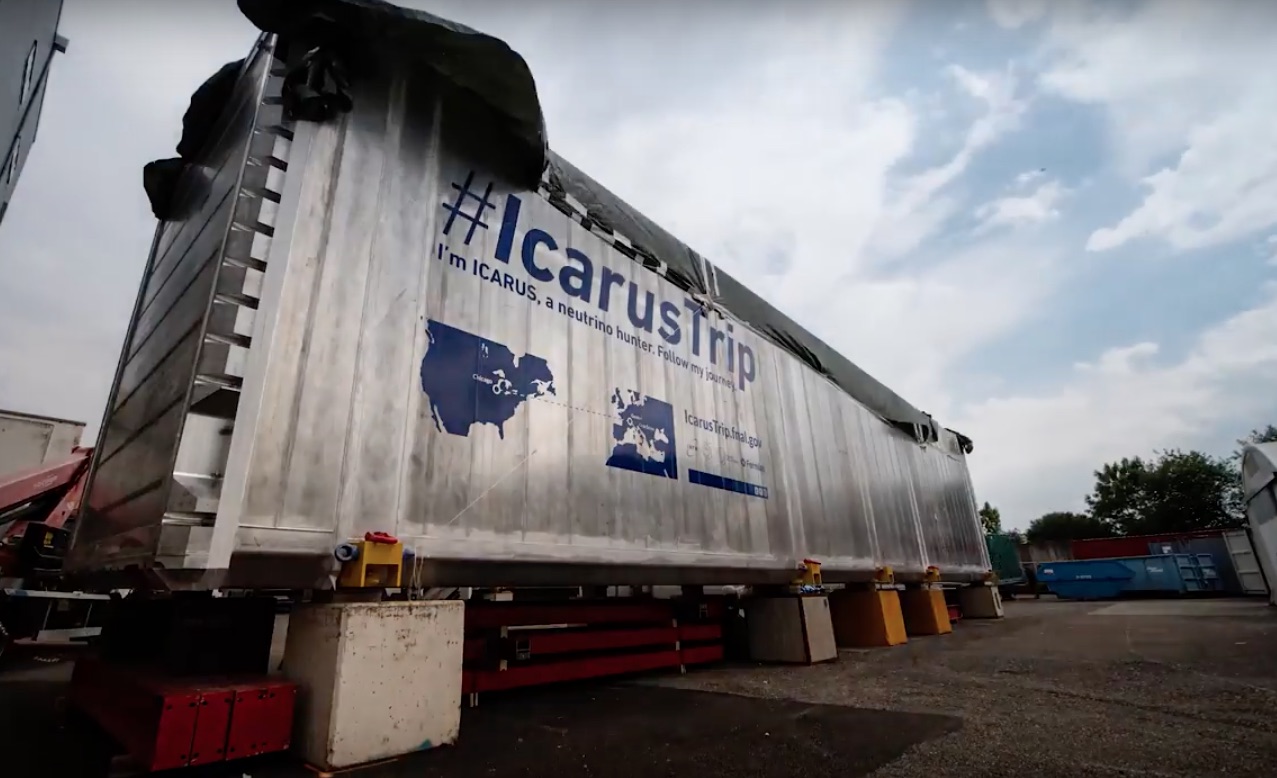ICARUS flies to Fermilab
The ICARUS T600 detectors are ready to start their journey to Fermilab. At the time of writing this note, the two detectors are parked at CERN, close to building 185 where 43 years ago neutral currents were discovered by the Gargamelle experiment. During the last two years, in a large clean room located inside this same building, the two detectors underwent a significant upgrade in preparation for the demanding conditions of the next phase of these, by now 17 years old, but still wonderful, detectors. The two detectors came from the Gran Sasso Underground Laboratory (Italy), after three years of continuous and very successful run, studying neutrino oscillations and anomalies with the CERN to Gran Sasso Long Baseline neutrino beam and collecting rare events deep underground.

ICARUS has been at CERN for refurbishment before it makes its way to Fermilab over the next few months (Image: Maximilien Brice/CERN)
At Fermilab, a new building, located at a distance of about 600 m from the origin of the Booster neutrino beam, is ready to host the two detectors. In conjunction with two other detectors (SBND and MicroBooNE), located at closer distances from the beam source (150 m and 400 m respectively), ICARUS will study the anomalies observed by the MiniBooNE experiment and by other neutrino experiments in reactors. In particular, the possibility that the observed anomalies are due to the presence of a fourth (sterile) type of neutrino will be either confirmed with large statistical significance or ruled out completely. The near detector (SBND) will provide the composition and spectrum of the beam at the source, while ICARUS will register the possible anomalies occurring during the neutrinos propagation. MicroBooNE will provide additional information at an intermediate distance. The T600 will also register a large sample of events from the NuMI beam, significantly enriched in the ne component thanks to the off-axis location. This additional sample of events will be used to train the selection algorithms to be used in the DUNE experiment.
The detectors will be operated at the surface, where the cosmic rays induced backgrounds are very large, especially in the energy region of the Booster beam. To successfully identify the signal in these conditions, the liquid argon TPCs need to be complemented by a highly efficient and fast anti-coincidence and by an internal trigger system (exploiting scintillation light in liquid argon) with the capability of fast event selection and pattern recognition. A massive passive coverage is also needed to filter out the most dangerous soft component of cosmic rays. A completely new readout electronics will also be implemented to deal with the high rates expected at Fermilab.
Starting from the 12th of June and for two months, the two ICARUS detectors will be moved from CERN to Fermilab. This large transportation is a challenge by itself as it consists of several steps: transport by truck from CERN to Basel, by barge from Basel to Antwerp, by ship across the Atlantic and on the Michigan lake down to the Chicago area and finally, again by truck, to Fermilab where the detectors are expected to arrive in the second half of July. Such a complicated and delicate transport required several months of detailed studies and careful planning. Coverage of the various stages of the trip will be available online at http://icarustrip.fnal.gov/ or on Twitter (https://twitter.com/hashtag/icarustrip).
The ICARUS neutrino detector prepares for its trip to Fermilab (Image Credits: Fermilab)
At Fermilab, the activities for the detector installation started at the beginning of May and are expected to be completed in first months of the next year.
The ICARUS T600 detector, built in Italy between the end of the nineties and the beginning of 2000nds, is the progenitor of the prototypes built in US and at CERN of the future, large scale, DUNE detectors. The upgrade of the T600 is part of a cooperation agreement between CERN and INFN and the installation and operation at Fermilab, as part of the Short Baseline Neutrino program (SBN), also significantly involves Fermilab itself and several US institutes. This activity is one of the fundamental components of the worldwide effort towards the development of our knowledge of the neutrino sector at levels comparable to the ones of the other parts of the Standard Model.

